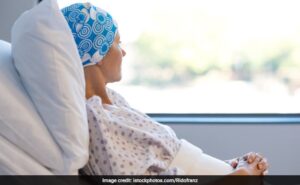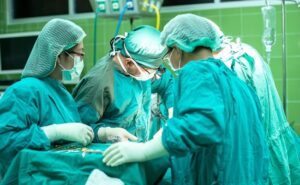Popular Indian TV actor Hina Khan was diagnosed with breast cancer. She is 36 and undergoing treatment for stage-3 cancer, busting the myth that older women, especially those in their late 40s and 50s are vulnerable to the disease. Firstpost spoke to Dr Huma Noor of Medical Oncology department at Fortis Escorts hospital in New Delhi to understand the changing pattern of breast cancer in particular and cancers in general. Excerpts:
Breast cancer has emerged as the most common cancer with over 2.3 million cases a year worldwide. Some agencies say it’s second most common after lung cancer. Why are we witnessing such a surge in breast cancer?
The reason for rise in breast cancer may be attributed to Westernised lifestyle – consumption of fast foods, oil-dense foods, lack of proper exercise, sedentary habits, overweight and obesity, late age marriage, and delayed motherhood. Family history has strong bearing with cancers.
A study by Cancer Journal showed an increase of about 40 per cent in cancer cases among Indian women since 1990. Are the factors causing breast cancer the same in India as elsewhere?
In general, yes in our country the risk factors are the same except in India, breast density is more as compared to western counterparts which has a direct link with breast cancer risk. Rest of the risk factors are early menarche (before 12 yrs), late menopause (after 55 years), advanced age, obesity — increased waist-hip ratio, increased BMI (> 25), delayed motherhood (after 30 years), never pregnant, family history of breast cancer.
A lot of new cases are being diagnosed among younger women. Does family history make younger women more vulnerable?
Absolutely right. In BRCA 1 type 55 to 72 per cent and BRCA 2 45 to 69 per cent of chances of breast cancer. In the general population, it is 13 per cent. As per NCCN guidelines (largest Cancer-related society globally), for high-risk breast cancer for example family history of cancer, breast cancer screening should start at least 10 years earlier than the last diagnosed patient or by 30 years. (For average risk we start breast cancer screening by 40 years).
Specialists often talk about genetic mutations such as BRCA1 and BRCA2 and also sedentary lifestyle as contributing factors for an increase in breast cancer cases. What are the common risk factors for developing breast cancer and can they be controlled?
Sure. Genetic factors, as you have enumerated, certain genetic factors like BRCA 1 and 2 mutations. Other genes involved are PTEN, CDH 1, TP 53, and STK 11. These genes can be detected on biopsy samples. Old age, first child after 30 years, obesity, dense breasts, early menarche (<12 years), delayed menopause (> 55 years), alcohol use, use of hormonal therapy, prior exposure to radiation.
Some people point to economic well-being leading to delayed childbirth as a factor for younger women to develop breast cancer. Is it actually the case or is it one of the growing myths about breast cancer?
It is a fact. Delayed childbirth is an established cause of breast cancer. Childbirth after 30 years increases breast cancer.
Earlier, diabetes and gout-like diseases were blamed on our lifestyle. Is the modern lifestyle the real villain for breast cancer too?
It’s not a lifestyle disease but lifestyle is a contributory factor
Some ayurvedic practitioners say that cancers of all kinds are essentially a result of oxygen deficiency in the cell. Do breathing exercises help lower the chances of having cancer, especially breast cancer?
Exercise has a positive effect on our body as well as mind. It has been proven by numerous studies, exercise does help in the prevention of cancers.
More cases have raised the awareness level about breast cancer and so screening has gone up. At what age should a woman think of getting screened for breast cancer?
For normal women, breast cancer screening should start at 40 years. For high-risk women, for example those with family history of breast cancer, screening should begin by 30 years. Screening is done by examination by a medical oncologist and mammogram (breast x-ray) once a year. For younger women, breast USG is advised.
Breast cancer treatments have vastly improved in the past two-three decades. Are all stages of breast cancer fully treatable and what are the general survival rates?
Breast cancer is divided into four stages. Stage I and Stage II are early breast cancers, Stage III is locally advanced cancer and Stage IV is advanced cancer. Stage I to III cancers are curable. Even for stage IV, the disease can be controlled for decades. Breast cancer treatment has undergone revolutionary changes in the past two to three decades, particularly due to the use of anti-Her 2 treatment, immunotherapy, PARPi inhibitors, CDK 4 /6 inhibitors, and antibody drug conjugate therapy (ADCs).
One final question, is breast cancer a preventable disease?
Fortunately, we can prevent breast cancer by adopting a healthier lifestyle. Following steps could be helpful in preventing a cyst or tumour turning into cancer:
-
Keep weight in check
-
Be physically active
-
Eat fruits and vegetables
-
Avoid alcohol
-
Judicious use of hormonal therapy
-
First child before 30 years
-
Encourage breastfeeding
In case of family history, begin screening for breast cancer by 25-30 years of age.


